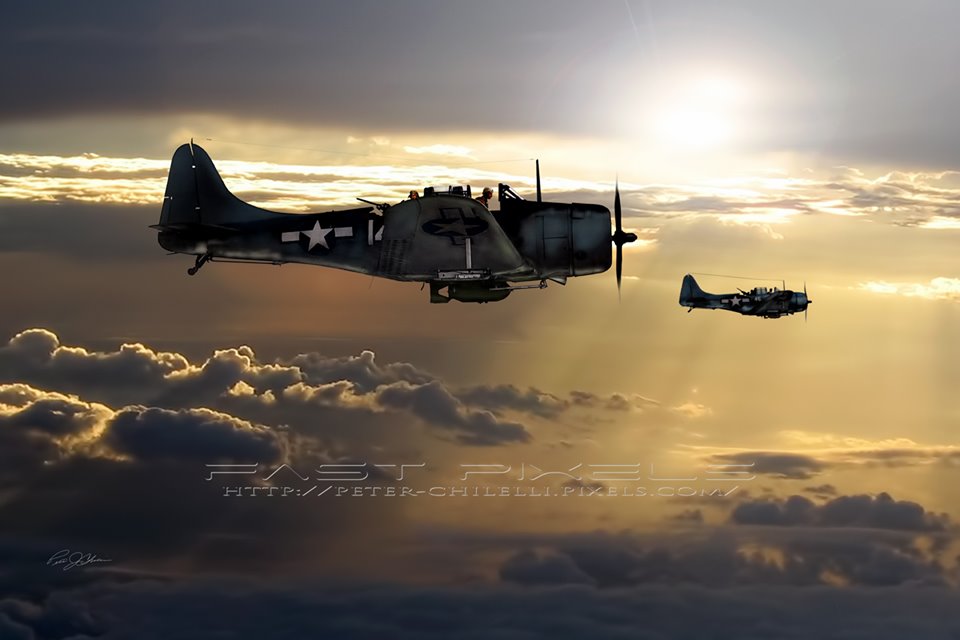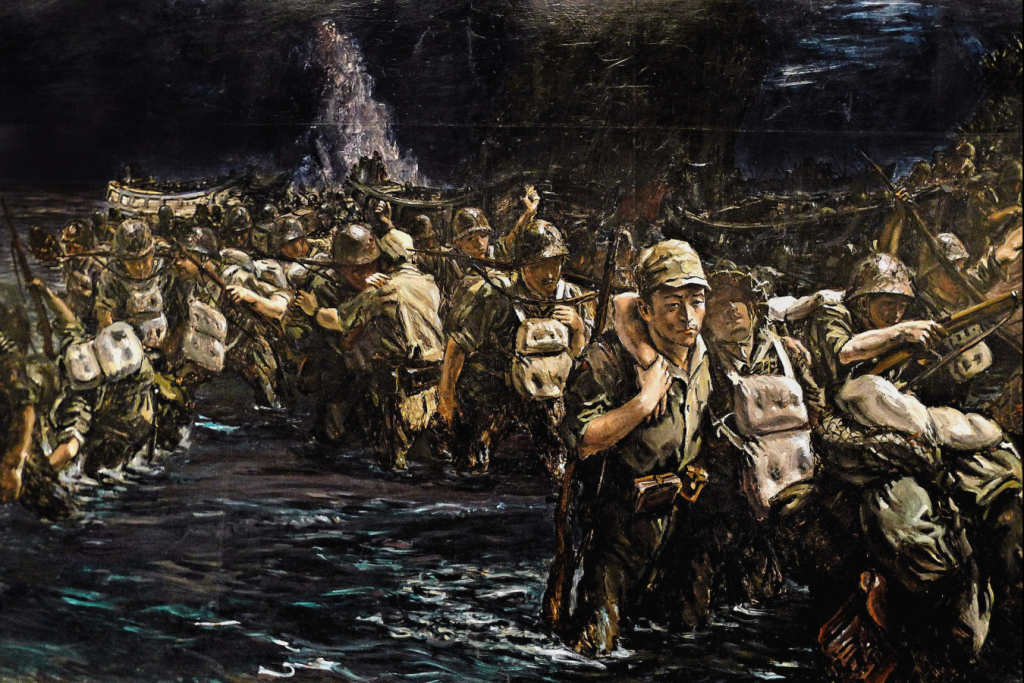Blown Slick Series #13 Part 23
In 1945 U.S. fast carriers supported the final amphibious operations of the war—the invasions of Iwo Jima and Okinawa—drawing the noose tight around Tokyo’s neck. Aircraft from Third and Fifth fleet carriers also pounded the Home Islands, disproving the airpower theory that naval aviation could not match land-based air. In July three days of strikes against the major naval base at Kure finished off the floating remnants of the Imperial Japanese Navy.7
For all the American satisfaction of an overwhelming victory for U.S. naval aviation in 1945, the essence of the tailhookers’ war actually had occurred three years earlier. The most decisive victories for carrier airpower had been achieved during six months of 1942, when the United States and Japan fought four of the Pacific war’s five carrier battles. First defensively at Coral Sea and Midway, and then supporting the Guadalcanal offensive at the Eastern Solomons and the Santa Cruz Islands, U.S. carriers pointed the way to the Marianas—and to Japan itself. The Carrier Comes of Age by Barrett Tillman
This series was never intended to be a complete summary of the war in the Pacific in 1942 or of any of the particular battles. Its focus has been on the evolution of aircraft carrier operations in 1942. But the reality is, it’s near impossible to isolate the war itself from “the how of ops.” So, six posts will be used for concluding the series. Beginning here in the first of Reflections the focus is on the nature of the Pacific war as 1942 closes, then followed by a second part addressing the individual carriers of ’42, followed by selected elements of how carrier operations evolved and were conducted, fighter issues, and, finally discussion on the impact of land based air on carrier operations and the emergence of Close Air Support (CAS).
The final two posts will be Part 29 – Afterword by Barrett Tillman, addressing the state of carrier warfare as the Battle of the Philippine Sea in 1944 begins and #30 – Conclusions; Implications for Current Ops.
This offering contains the following two discussion areas:
- The Endgame for Guadalcanal (and 1942 carrier operations)
- Noted historian/author summaries of Guadalcanal and the state of the war in the Pacific at the end of 1942
1] Endgame for Guadalcanal
Summaries of World War II in the Pacific in general, and even narrower focus on the Guadalcanal Campaign itself tend to cover the period after the Naval Battle of Guadalcanal till the final abandonment in Feb 1943 with short summaries letting that mid-November battle stand as the final serious confrontation.
This allows a possible misrepresentation of the serious Japanese effort to retake the island in that the Japanese continued on into December to attempt supplying their troops ashore with multiple means. Indeed the naval Battle of Tassafaronga on the night of 30 November–1 December 1942, was one of the worst defeats suffered by the US Navy in World War II, third only to the Attack on Pearl Harbor and the Battle of Savo Island. Yet, despite their continued efforts and U.S. losses, the Japanese were still thwarted in their attempts at re-supply. Guadalcanal remained Starvation Island for Japanese troops.
Even with the substantial (longed for decisive battle) victory in the Battle of the Santa Cruz Islands which left the US Navy with no operational carriers in the Solomons, the Japanese were unable to close out the overall attempt to retake the island. Aviation leadership had been decimated, and troops on the island were starving and resupply simply wasn’t possible.
Finally, on December 12, the Japanese Navy proposed that Guadalcanal be abandoned. This was opposed by Japanese Army leaders, who still hoped that Guadalcanal could eventually be retaken from the Allies, but on December 31, 1942 Japan’s Imperial General Headquarters, with approval from the Emperor, agreed to the evacuation of all forces from the island and the establishment of a new line of defense for the Solomons on New Georgia.
Conceding the hard-fought campaign to the Allies, Operation Ke – in all aspects a Japanese Dunkirk conducted over three nights between February 2 and February 7, 1943 – succeeded in the evacuation of 10,652 troops. Over 20,000 Japanese had died on Guadalcanal.
Even in the end it was a close run fight. The most striking thing is the virtual equality of the results — 24 ships on each side, with comparable tonnage. However, the meaning of this was very different for each side. One is that the Allied losses, all American except for the Australian cruiser Canberra, were going to be replaced. The new ships were building at the time. Japanese losses mostly could not be made good. They were constrained to fighting the War with what they had and could not build replacements.
Total Naval Losses at Guadalcanal |
||||
ship |
Allied |
tonnage |
Japanese |
tonnage |
Aircraft Carriers |
2 |
44,600 |
1 |
12,700 |
Battleships |
0 |
0 |
2 |
73,200 |
Heavy Cruisers |
6 |
76,600 |
3 |
31,500 |
Light Cruisers |
2 |
16,800 |
1 |
5,700 |
Destroyers |
14 |
22,815 |
11 |
20,930 |
Submarines |
0 |
0 |
6 |
11,300 |
Totals |
24 |
160,815 |
24 |
155,330 |
With the U.S. victory, Guadalcanal signaled the end of any significant offensive endeavors by the Japanese. Noted by Richard Frank in GUADALCANAL; The Definitive Account of the Landmark Battle (800 pages):
The discussion of the operational elements of the campaign draws us back to its overall strategic impact. Quite simply, Guadalcanal was the literal turning point of the war in the Pacific. The Japanese remained on the offensive in the Southeast Area in the summer of 1942 and persisted in an offensive in New Guinea until checked there and forced to focus their attention on the southern Solomons. Moreover, up until the Naval Battle of Guadalcanal the Japanese threatened to crush the attempt of the Allies to move to the offensive.
Thus, Guadalcanal, not Midway represented the actual shift in strategic postures.
By way of closing the loop, below the overleaf further insight from key authors and historians are provided for readers interested in more aspects and perspective of the campaign and Pacific warfare throughout 1942.
2] Selected Summaries by noted authors and historians James Hornfischer, Admiral Samuel Cox, Jonathan Parshall and Anthony Tully:
Key Author Excerpts
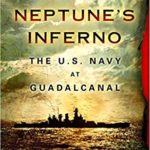 James D Hornfischer: Neptune’s Inferno: The U.S. Navy at Guadalcanal
James D Hornfischer: Neptune’s Inferno: The U.S. Navy at Guadalcanal
“The American landings on Guadalcanal developed into the most sustained and vicious fight of the Pacific war … the nickname the Americans coined for the waters that hosted most of the carnage , Ironbottom Sound, suited the startling scale of destruction: The U.S . Navy lost twenty – four major warships; the Japanese lost twenty – four. Aircraft losses too were nearly equal: America lost 436, Japan 440 . The human toll was horrific . Ashore, U.S . Marine and Army killed in action were 1,592 (out of 60,000 landed). The number of Americans killed at sea topped five thousand. Japanese deaths set the bloody pace for the rest of the war, with 20,800 soldiers lost on the island and probably 4,000 sailors at sea…
As its principal players would admit afterward , the puzzle of victory was solved on the fly and on the cheap, in terms of resources if not lives. The campaign featured tight interdependence among warriors of the air, land, and sea. For the infantry to seize and hold the island, ships had to control the sea. For a fleet to control the sea, the pilots had to fly from the island’s airfield. For the pilots to fly from the airfield, the infantry had to hold the island. That tripod stood only by the strength of all three legs. In the end though, it was principally a navy’s battle to win. And despite the ostensible lesson of the Battle of Midway, which had supposedly crowned the aircraft carrier as queen of the seas, the combat sailors of America’s surface fleet had a more than incidental voice in who would prevail. For most of the campaign, Guadalcanal was a contest of equals, perhaps the only major battle in the Pacific where the United States and Japan fought from positions of parity. Its outcome was often in doubt
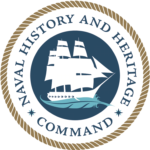 Admiral Samuel J. Cox, Director of Naval History and Heritage Command: H-Grams
Admiral Samuel J. Cox, Director of Naval History and Heritage Command: H-Grams
Unlike the Battle of Midway which was almost entirely a carrier vs. carrier battle, the fight to gain and hold Guadalcanal was a land, sea, land-based air, and sea-based air six month give and take. Each element was dependent on the other and the equality of the Japanese and American carrier airpower played a major part in neither side gaining lasting superiority and drove how each side chose to attack and defend. It was one thing to defend Midway operating in open ocean; being closely tied to the geography of the island and surrounding waters to provide air support was a whole other thing. With intelligence far inferior to that during Midway, staying in one general area exposed the carriers to submarine, land and sea based attack. There was much to be learned – at the expense of all participants.
The Japanese surface navy did not get the memo that the tide of war had turned at the Battle of Midway (actually, literally, because the Japanese kept their losses at Midway a secret from almost everyone who didn’t see it firsthand). Not realizing they were supposed to be losing, the Japanese navy repeatedly went on the attack, and for much of the campaign held the initiative. The result was seven brutal major naval battles and numerous lesser ones, including two carrier versus carrier battles on the scale of Coral Sea, and five ferocious and incredibly costly night surface actions.
The price for defending Guadalcanal paid by the U.S. Navy was two aircraft carriers [USS Wasp (CV- 7) and USS Hornet (CV-8)], five heavy cruisers (plus an Australian heavy cruiser and 84 of her crew), two light cruisers, and 15 destroyers sunk, and numerous other ships of all types heavily damaged. The Japanese lost an approximately equal number of combatants (including two battleships and a light carrier) along with numerous transports with thousands of troops. So many ships were sunk in the sound between Guadalcanal and Tulagi that it became known as “Iron Bottom Sound.” The U.S. Navy and Marines lost over 400 aircraft in the campaign, and the Japanese lost somewhat more (figures vary.) It was in the skies around Guadalcanal (not at Midway as commonly believed) that the cream of Japanese naval aviation was finally lost, particularly over the guns of vastly improved U.S. shipboard anti-aircraft fire.
The Japanese Navy fought with extreme tenacity, skill, and determination, and the naval battles around Guadalcanal were bookended with two of the worst defeats in U.S. naval history (Savo Island and Tassafaronga), eclipsed only by Pearl Harbor. The battles in between were all narrow wins or losses for either side, all with substantial casualties. In the first night battle of Guadalcanal (13 November 1942) a force of U.S. cruisers and destroyers sacrificed itself to prevent a second Japanese battleship bombardment of Guadalcanal (the first had killed 40 Marines and destroyed or damaged over half the 90 U.S. aircraft on the island) at a cost of over 1,400 Sailors, including two admirals, and all five Sullivan brothers. For much of the campaign, the Japanese navy owned the night, while U.S. aircraft from carriers and Henderson Field on Guadalcanal owned the day. Attempts by either side to challenge the other’s strength usually resulted in heavy losses. Throughout the campaign, the Imperial Japanese Navy fought with great valor and gave as good as it got, frequently to the surprise of U.S. forces, which also invariably fought with great courage. But despite severe losses, in the end it was the U.S. Navy that remained on the field, while the Japanese withdrew. The difference was that the U.S. could replace the losses in ships and aircraft, but the Japanese could not.
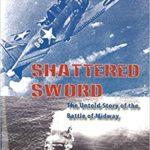 Jonathan Parshall and Anthony Tully: Shattered Sword; The Untold Story of the Battle of Midway
Jonathan Parshall and Anthony Tully: Shattered Sword; The Untold Story of the Battle of Midway
Another consequence (of the Japanese defeat at Midway) was the obviation of Japan’s barrier strategy before it had truly begun. Without a powerful carrier striking force to transport aircraft to outposts under attack, the strategy was unworkable. This was illustrated when the Americans unexpectedly counterattacked at Guadalcanal in August 1942.
The occupations of both Guadalcanal and Tulagi by the Japanese was both an extension of their defensive perimeter outward from the main Japanese base in the region, Rabaul, and an offensive move to apply pressure against Australia’s supply lines. As such, Guadalcanal was essentially an outpost of Japan’s defensive barrier in the southwest Pacific.
Had the Japanese won the Battle of Midway, an American operation like Guadalcanal most likely could never have occurred, at least not when it did. However, the victory at Midway gave the Americans rough parity in fleet carriers and enough confidence in their abilities that they were willing to fight in a remote backwater like the Solomons. Likewise, the rough parity of carrier forces of the two sides contributed to the protracted nature of the bloody struggle for the island.
It is important to understand that the Japanese, while privately acknowledging the seriousness of the defeat at Midway, did not feel that they had been condemned ipso facto to fighting on unequal terms around Guadalcanal. It did not affect their strategic formulations, and it did not temper their aggressiveness. Indeed, in the short term, they were able to stay in the game in the waters off Guadalcanal.
At this point in the conflict, even after the losses she had suffered, Japan still possessed the means to equip the air groups of several more fleet carriers, had the ships themselves been available. The truth of this statement is revealed in the prodigious scale of aerial resources the Japanese were ultimately able to commit to the Solomons contest, as well as the fact that Japan deployed credible air groups at various points in the struggle on board Hiyo, Junyo, and Zuiho. With Shukaku and Zuikaku forming the basis of their new mobile force, and the unexpected woes of the American carriers at the hands of Japanese submarines (Saratoga was torpedoed and put out of action again from September to November 1942, and Wasp was sunk by 1-19 on 15 September), the odds did not turn against Japan immediately Of the two major carrier battles fought off Guadalcanal-Eastern Solomons and Santa Cruz-the Japanese lost the former but arguably won the latter.
But even when they achieved what appeared to be temporary victories in the waters around Guadalcanal, they lacked the strength to capitalize on their triumphs. They could no longer “close out the deal” by inflicting a final, crushing defeat, driving off the American support vessels, and exterminating the U.S. forces on the island. Had even Hiryu or Akagi survived Midway, which was not inconceivable, the Japanese might have had the requisite strength to prevail four to six months later in these crucial waters.
Much worse lay in store after the Imperial Navy conceded defeat at Guadalcanal. By the end of 1942, the carrier forces of both sides were exhausted and depleted, leaving the remainder of the brutal fighting in the Solomons to be conducted by surface vessels and land-based airpower. The carrier fleets would not meet again in battle until 1944. But by the middle of 1943, the Americans were commissioning Essex-class fleet carriers at the rate of one every other month, a production rate that the Japanese in their wildest dreams could never equal. With nine very serviceable light carriers of the Independence class also having been commissioned in the same year, American naval aviation was now poised to transform the Pacific war.
At the same time, not only had the Americans fundamentally altered the raw numbers in the fleet carrier equation, they had also radically transformed the intrinsic power of the individual flight decks themselves. The addition of a new generation of carrier aircraft (in particular the excellent F6F Hellcat fighter), the improvement of air search and fire-control radar, the maturation of the Combat Information Center (CIC) in combination with more effective fighter-vectoring techniques, and the enormous increase in the number and effectiveness of shipboard antiaircraft batteries (including those armed with radar proximity-fused ammunition) all meant that ship-for-ship American carriers were now markedly superior to those of the Japanese. Almost as important was the U.S. Navy’s development of a sophisticated mobile logistics capability-fast oilers and transports, repair ships, and floating dry docks-giving the Americans an unparalleled ability to forward deploy their fleet anchorages and then keep carriers operating in enemy waters for weeks at a time through underway replenishment. Not only was American naval aviation thus capable of threatening areas of the empire once thought to be off-limits, it could also maintain a much higher tempo of operations than the imperial fleet could. So impressive was this cumulative leap in technology and operational technique that, in effect, the Americans emerged in late 1943 with an entirely new navy.’

